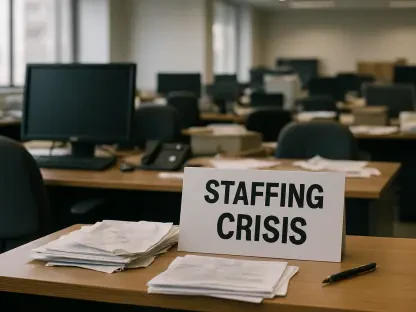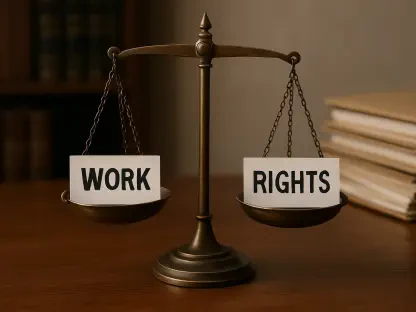In recent years, the intersection of government policies and civil rights in hiring has sparked significant debate and litigation. This is exemplified by controversial cases such as Sheetz’s alleged discriminatory practices. The focal point involves a lawsuit initially sponsored by the U.S. Equal Employment Opportunity Commission (EEOC) against the gas station chain Sheetz, accused of using criminal background checks that disproportionately disadvantaged racial minorities. The case brings to light how executive orders, such as those from President Donald Trump’s tenure, can drastically influence ongoing civil rights protections within the employment landscape.
Sheetz Lawsuit: A Critical Examination
Disparate Impact Allegations and Legal Framework
The lawsuit against Sheetz, supported by the EEOC, highlights deep-rooted concerns about disparate impact in hiring practices. The allegation insists that Sheetz’s policy of screening job applicants based on their criminal records disproportionately targeted minority groups, infringing upon Title VII of the 1964 Civil Rights Act. This legal action underscores a broader critique of how such practices can inadvertently perpetuate systemic racism within employment processes. By bringing this case, the EEOC aimed to address the nuances of racial discrimination in modern hiring practices, advocating for fairer evaluation criteria that do not disproportionately penalize certain demographic groups.
The argument against Sheetz is situated within a broader legal interpretation of the disparate impact theory, a critical component of U.S. civil rights law. Disparate impact claims examine whether policies, even if neutral on the surface, result in an unjustified adverse impact on particular racial or minority groups. This case sparks a larger conversation about the role of history and context in employment evaluations, questioning the balance between employers’ rights to assess potential employees and the protection of individuals from unwarranted discrimination due to historical systemic disparities.
The Influence of Executive Policy Changes
President Trump’s executive order to discontinue the enforcement of disparate-impact claims had a profound effect on the trajectory of civil rights litigation, including the case against Sheetz. This directive ostensibly prioritized business needs over established civil rights frameworks by urging federal agencies to halt actions that relied on disparate impact theory. The EEOC’s subsequent withdrawal from the Sheetz case exemplifies how such executive orders can powerfully shift the landscape of civil rights enforcement, supplanting established norms with new regulatory directives that mirror current political ideologies. Critics argue that it jeopardizes protections against systemic bias, while supporters maintain it refines hiring to emphasize individual merit.
These swift policy shifts evoke significant concern among civil rights advocates, who argue that undermining disparate-impact claims equates to rolling back decades of progress in employment equality. The controversial nature of the order has sparked considerable debate about the legitimacy and effectiveness of such policy directives. Legal experts continue to scrutinize the potential long-term consequences of these policy changes on the national civil rights framework, seeking clarity and possible restoration of protective measures that had been the bedrock of anti-discrimination efforts in the workplace.
Ongoing Resistance and Broader Implications
Advocacy Groups and Continued Legal Action
Despite the withdrawal of the EEOC from the case, advocacy groups have continued to pursue litigation independently, illustrating their unwavering commitment to combating perceived discriminatory practices. Organizations like the Public Interest Law Center perceive the legal system as a crucial tool in the fight against systemic bias, even amidst political headwinds. Their persistence in pushing forward with the lawsuit reflects a broader determination to ensure that civil rights protections remain robust and effective. These groups emphasize the ongoing need for accountability and reform in the hiring practices of major corporate entities, fostering a legal environment that enables fair evaluation for all job applicants.
The commitment of these advocacy groups amplifies the need for continued discourse and legal action as a counterbalance to executive orders that may weaken civil rights protections. Their work highlights the resilience of civil rights initiatives and the importance of a diverse array of stakeholders in preserving equity in employment. By keeping the issue alive through legal channels, these groups ensure that the public dialogue around race, discrimination, and hiring practices remains active and relevant.
The National Conversation on Civil Rights Enforcement
The case against Sheetz serves as a microcosm of a larger national discussion, reflecting ongoing tensions between ensuring business autonomy and protecting civil rights. The push to dispense with disparate-impact liability as part of the Heritage Foundation’s “Project 2025” has polarized opinion, prompting a division between conservative policymakers advocating for fewer regulatory constraints on businesses and civil rights supporters championing robust anti-discrimination laws. This conversation is indicative of a broader ideological divide that impacts not only the realm of employment but also the shaping of national policy and the role of government in enforcing fairness.
The evolution of this case and its surrounding controversies underscores the need for a continual examination of the interplay between political ideologies, executive actions, and civil rights enforcement. As stakeholders on both sides of the debate advocate for their vision of appropriate regulatory frameworks, the dialogue highlights the necessity for informed policymaking that carefully considers the balance between economic incentives and maintaining equitable societal principles. Decisions made in this sphere will likely have lasting implications on how discrimination claims are addressed in the American legal system.
Legal and Social Dynamics in Employment Discrimination
The Role of Federal Agencies and Judicial Precedents
Federal agencies like the EEOC play a crucial role in interpreting and enforcing employment discrimination laws, often setting precedents that influence national policy. The decision of such bodies to engage—or not to engage—in lawsuits against alleged discriminatory practices sends powerful messages about the current state of civil rights enforcement. When influenced by executive orders, these decisions can alter the landscape of legal protection significantly, highlighting the delicate interplay between political power, judicial processes, and social justice goals. Cases like Sheetz provide insight into how shifts in government priorities can impact longstanding legal principles.
Judicial precedents form the backbone of egalitarian hiring practices, ensuring that standards of fairness and anti-discrimination are upheld across industries. However, these precedents must continually evolve to address emerging realities of discrimination and technological advancements in hiring processes. Cultivating a forward-thinking legal framework requires carefully balancing historical insights with contemporary research on inequity and bias, ensuring protective mechanisms are both rigorous and relevant.
Potential Paths Forward for Employers and Lawmakers
Moving forward, employers, policymakers, and legal entities must navigate these complex dynamics to cultivate a more inclusive and equitable environment. Employers are urged to reevaluate their hiring protocols, looking beyond surface-level compliance and addressing the underlying biases that may permeate their practices. By implementing diversity-focused training and policies, businesses can foster workplaces that not only comply with legal standards but also embrace genuine inclusivity.
For lawmakers and federal agencies, establishing a balanced approach that respects business interests while reinforcing civil rights protections remains critical. This may entail revisiting and refining existing legislation or crafting new policies that reflect the changing landscape of work and its inequalities. Engaging with a broad spectrum of stakeholders to inform policy decisions ensures that diverse voices and experiences are considered, facilitating just outcomes in ongoing debates about employment discrimination.
Looking Ahead: Navigating a Complex Landscape
In recent times, the intersection of government policies and civil rights in the hiring sector has been a hotbed of debate and courtroom battles, underscored by the contentious case involving Sheetz. This scenario exemplifies a broader discourse, where the U.S. Equal Employment Opportunity Commission (EEOC) has taken legal action against Sheetz, a gas station chain. The company faces accusations of employing criminal background checks that disproportionately impact racial minorities negatively. This case shines a spotlight on how executive orders, especially from the era of President Donald Trump, can dramatically alter the landscape of civil rights protections within the employment sphere. Such orders have the power to reshape the framework under which companies operate, with potential consequences for fair hiring practices. As societal norms and governmental directives intersect, businesses must navigate these waters carefully, ensuring compliance and fairness while safeguarding against practices that could unintentionally perpetuate inequality.









